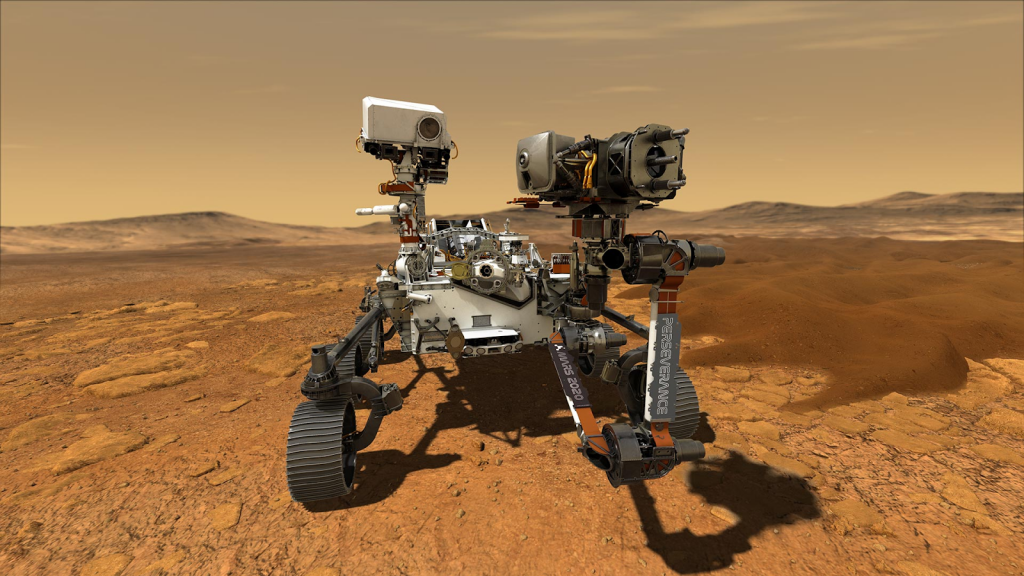Why and how NASA’s Perseverance mission produced oxygen on Mars
Why in the News?
NASA has announced a device named MOXIE (Mars Oxygen In-Situ Resource Utilization Experiment) attached to the perseverance rover was able to produce oxygen from the thin Martian atmosphere for the first time.

How did Perseverance produce oxygen on Mars?
- In its first operation, the MOXIE produced 5 grams of oxygen from carbon dioxide in the Martian atmosphere, enough for an astronaut to breathe for 10 minutes.
- On Mars, carbon dioxide makes up around 96% of the gas in the planet’s atmosphere. Oxygen is only 0.13%, compared to 21% in Earth’s atmosphere. Like a tree on Earth, MOXIE inhales carbon dioxide and exhales oxygen.
- Through its first successful run, MOXIE was able to demonstrate that it survived its launch from Earth, an almost seven-month journey through deep space, and landing on the Martian surface with Perseverance.
- MOXIE is only a test model. Future oxygen generators that descend from its technology need to be about 100 times larger to support human missions on Mars.
Why is producing oxygen on the Red Planet so important?
- A substantial amount of oxygen supply on Mars is essential for crewed missions that plan to go there, not just for astronauts to breathe but for rockets to use as fuel while coming back to Earth.
- As per NASA, for four astronauts to take off from Mars, a future mission would require around 7 metric tons of rocket fuel and 25 metric tons of oxygen– around the weight of an entire space shuttle.
- In contrast, astronauts living and working on Mars would require far less oxygen to breathe, maybe around one metric ton.
- Scientists believe that it will be an enormous challenge to haul the 25 metric tons of oxygen from Earth to Mars for the return journey, and that their job would become significantly easier if the liquified oxygen can be produced on the Red Planet. This is where MOXIE’s role comes in.
Reference:
Subscribe
Login
0 Comments
